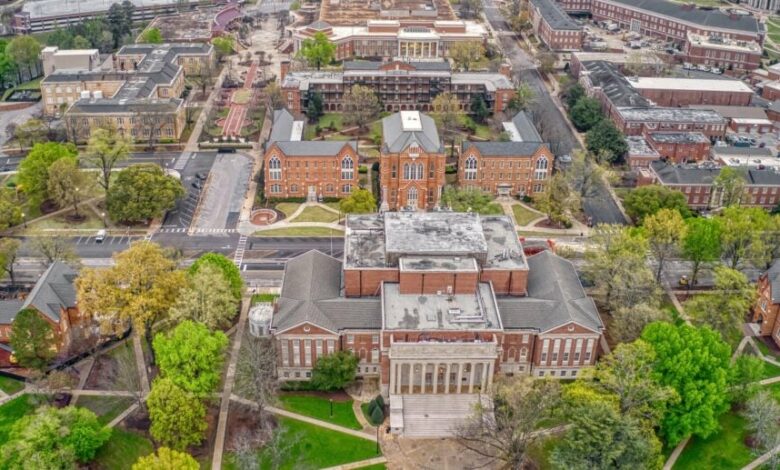10 College Housing Markets That Buy-and-Hold Investors Should Consider

Although having a robust college presence is a massive benefit for its parent city, other metrics should be considered when analyzing long-term real estate investment potential.
In the 1980s, many of the Rust Belt cities in the Midwest suffered a huge economic decline when the steel mills closed down. In Pittsburgh, for example, home to notable universities such as Carnegie Mellon, the University of Pittsburgh, Duquesne, and others, 75% of the steel industry closed, causing 153,000 workers to lose their jobs in the mid-1980s and the city to lose 8% of its population throughout the decade. The result was devastating to Pittsburgh’s economy.
A vibrant city should have a broad spectrum of businesses and industries, so if one significant employer moves out, it should still be able to survive and thrive. Looking at college towns with a long-term view to investing, many of the metrics point to the same data we have seen since the pandemic: Generally expensive states such as New York and California are losing population to the Sun Belt, where the cost of living is lower fueled by lower taxes and house prices—not to mention less heating costs.
Although the decline appears to have slowed in 2023, possibly due to more workers recalled to on-site employment, overall the North is losing while the South is gaining population. According to the U.S. Census, four Southern states—Texas, Florida, North Carolina, and Georgia—accounted for 93% of the nation’s population growth in 2022 and 67% in 2023.
Many of the people who moved south are not returning north. The lure of more jobs, lower taxes, and cheaper land has also caused many companies to locate their headquarters in the South, particularly in the electric vehicle (EV) industry and other manufacturing sectors.
Thus, it’s hardly surprising that three of the top four college markets with the most significant growth potential are in Texas, and nine out of the top 10 are in the South. Here’s a deeper look into the top four.
Tuscaloosa, Alabama
The metrics that made Tuscaloosa the top RTP (rent-to-price ratio) college town are also why it has the best solid growth potential. Its YoY population growth is a robust 3.99%, its price growth is close to 2%, and its rental growth is 6.79%.
Like other smaller American cities enjoying a boom in car manufacturing with the onset of EVs, one of the city’s largest employers is Mercedes-Benz, which accounts for 4,500 people. However, the University of Alabama is the city’s biggest employer, with 6,839 workers—two stable hubs of employment that appear to insulate it from an unpredictable economy.
At the time of this writing, Realtor.com shows more than 800 properties for sale, with the vast majority being under $300,000 (the median sold home price is $254,900). Ranch-style single-family homes and small apartment buildings make up the majority of rental stock (there are 262 currently available).
The average rent of $1,319 means that this is a great city to invest in, with the ability to scale quickly due to the cash flow, price appreciation, and low barrier to entry. A potential interest rate dip will also help fuel future investing.
College Station, Texas
The home of Texas A&M University enjoys similar stats to Tuscaloosa, with one notable exception: YoY price growth is a healthy 3.45%, outperforming the Alabama city.
Part of that is due to its large number of potential employers and diversity of businesses, which are spread across education, food, government, healthcare, biotech, and manufacturing. There are currently about 800 homes for sale in the region, with a median sold home price of $309.400 and an average rental price of $1,553, making it slightly less cash-positive than Tuscaloosa but still a good place to invest due to its other stats.
Austin, Texas
Austin’s price growth has shrunk dramatically over the last year, by -7.32%. Its rent growth has also dropped by -2.6%. That’s because Austin—known as the “Silicon Valley of the South”—experienced dramatic price appreciation during the pandemic.
“There was an explosion of activity in Austin that just got too hot,” Redfin chief economist Daryl Fairweather told Newsweek in November 2023. “And then there needed to be a correction.”
With tech companies like Alphabet’s Google and Facebook parent Meta Platforms having offices in Austin, pandemic remote working saw the city experience a deluge of transplants from more expensive cities on both coasts. The increase in interest rates has seen inflated prices go into free fall.
There are currently just over 5,000 homes for sale in Austin, with a median sold home price of $499.400. The average rental price in the city is $1,753, which makes it challenging to rent for cash flow at the moment.
However, once prices settle, Austin could still be a good place to invest in the long term due to the number of high-paying tech jobs in the area and the attraction of working there for well-educated workers.
Provo, Utah
Home of BYU (Brigham Young University), Provo has experienced population and rent growth over the last year but has seen its price growth drop due to the ongoing effects of high interest rates. The main employers in the city are education (BYU), tech, cosmetics, and healthcare.
However, the home prices are the main drawback of investing in Provo. The median sold home price is currently $491.300 compared to the average rent, which is $1,803. This makes it a tough city to cash flow in the short term, though it is still a solid investment in the long term.
Other College Town Stats
Looking at the other stats from our college markets growth potential table, one other town stands out—Oxford, Mississippi, home to the University of Mississippi. Home prices appreciated a massive 14.75% over the last year—even with high interest rates—while rental growth dropped 6.77%.
How can that be? It appears it’s down to the aftereffects of the coronavirus, which still see towns and cities throughout Mississippi enjoying high appreciation numbers.
According to realtor.com, though, there is a big difference between the median listing home price of $475,000 and the median sold home price of $306,400. The drop in rent prices could be due to tenants being unable to afford the jump in rents that occurred in 2022 (they currently stand at an average of $1,647), which accounted for inflation, low inventory, and higher prices. The modest drop is a correction after an unsustainable increase.
Final Thoughts
The South is enjoying its moment in the sun, and it doesn’t look like it will end anytime soon. The migration of jobs and people to Alabama, Texas, Florida, and South Carolina has created a perfect storm for real estate investing, with high-paying employment and low house prices. When interest rates eventually drop, cash flow will increase, fueling the demand for housing and likely pushing up home prices. Anchored by reputable colleges and a strong employment base, many of these cities make for great long-term investments.
Ready to succeed in real estate investing? Create a free BiggerPockets account to learn about investment strategies; ask questions and get answers from our community of +2 million members; connect with investor-friendly agents; and so much more.
Note By BiggerPockets: These are opinions written by the author and do not necessarily represent the opinions of BiggerPockets.
Source link





